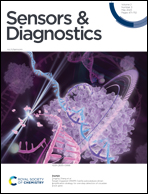NIR-II semiconducting polymers for in vivo high-resolution imaging and theranostics
Abstract
Precision medicine calls for accurate diagnostic and therapeutic methods that could increase disease sensing and treatment outcome. The second near-infrared (NIR-II, 1000–1700 nm) window has attracted considerable attention because as the light–tissue interaction such as scattering and reflection, absorption and autofluorescence significantly decreases, it enables excellent penetration depth and spatial resolution. Semiconducting polymers (SPs) possess the merits of good stability, easily tunable structures and properties, and potential degradation, holding great potential for NIR-II biomedical applications. In this minireview, we summarize the recent advances in SPs with NIR-II fluorescence emission for precise diagnostics and theranostics. The development and emerging strategies for obtaining high-brightness NIR-II SPs are discussed. NIR-II SPs with other functions including photoacoustic imaging, photothermal therapy, photodynamic therapy and immunotherapy for disease theranostics are illustrated. Biomedical applications such as in vivo high-resolution angiography, brain imaging, and various phototheranostic modalities are also highlighted. This review aims to provide guidance for designing high-performance NIR-II SPs to realize maximized effectiveness of various bio-applications, and it will also provide comprehensive understanding about the chemical structure–photophysical property–biomedical application relationships of organic/polymer phototheranostic materials.



 Please wait while we load your content...
Please wait while we load your content...